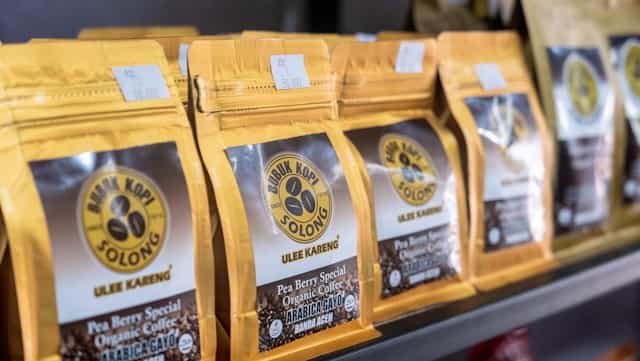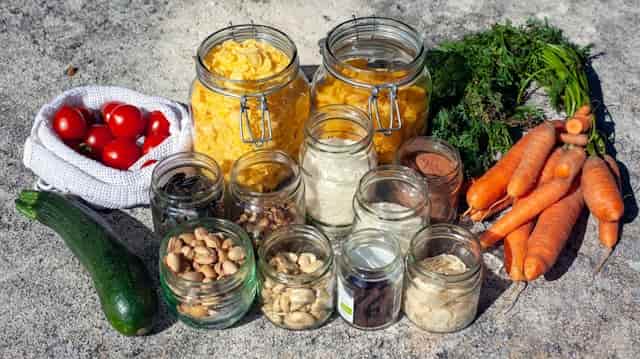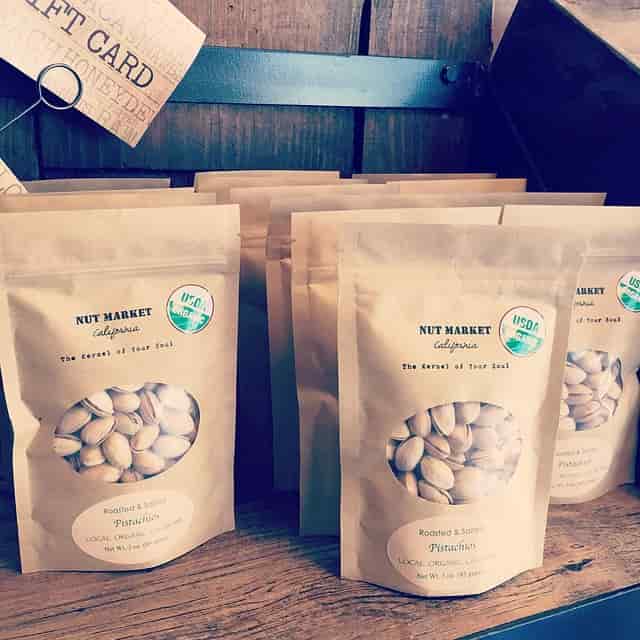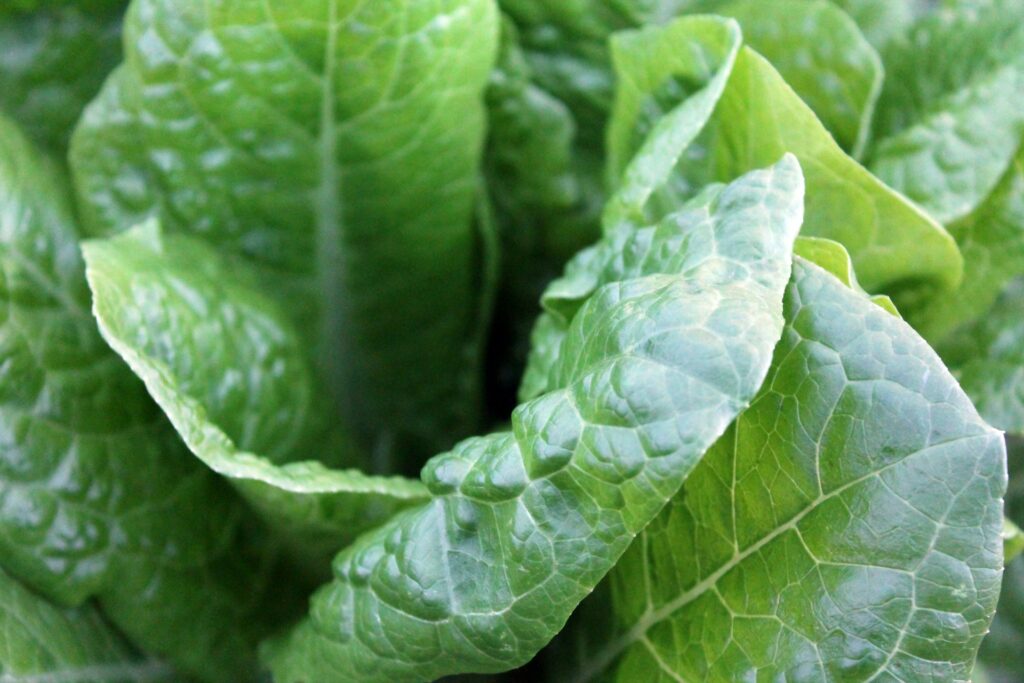The burgeoning organic food industry has witnessed a remarkable surge in recent years, catalyzed by consumers’ escalating awareness of health and environmental concerns. As this conscious shift towards organic alternatives gains momentum, the need for packaging solutions that align with these values becomes paramount. Organic food packaging not only safeguards the integrity of the products but also reflects the ethos of sustainability and transparency that consumers have come to expect.
The organic food movement has transcended mere dietary preferences, evolving into a comprehensive lifestyle choice that prioritizes holistic well-being. Consumers are increasingly scrutinizing the contents of their food, seeking products that are free from synthetic pesticides, fertilizers, genetically modified organisms (GMOs), and artificial additives.
What Is Organic Food Packaging?
Organic food packaging refers to the materials and methods used to package organic foods, designed to align with the principles of organic farming and sustainability. This means avoiding synthetic chemicals, opting for biodegradable or recyclable materials, and minimizing the environmental footprint.
While the focus is usually on the organic nature of the food itself, one important aspect that is often overlooked is the packaging used to contain and preserve these products. Organic food packaging plays a pivotal role in ensuring the freshness and sustainability of organic food items, addressing both environmental concerns and consumer preferences.
The Importance of Organic Food Packaging
1. Ensuring freshness
Organic food packaging is particularly designed to maintain the freshness and quality of the products it contains. This is especially important for organic food items, as they are often free from preservatives and other synthetic additives.
By utilizing packaging that is tailored to the needs of organic products, the shelf life of perishable goods such as fruits, vegetables, and dairy can be extended. This not only reduces food waste but also ensures that consumers receive products at their peak freshness.
2. Oxygen and moisture control
Specialized organic packaging incorporates advanced technologies to control oxygen and moisture levels within the packaging. By doing so, it helps to slow down the natural deterioration of food products, preserving their taste, texture, and nutritional value.
By minimizing exposure to oxygen and moisture, organic food packaging helps to maintain the integrity of the products from farm to table.
3. Sustainable preservation method
In addition to freshness preservation, many organic packaging solutions embrace sustainable preservation methods. These methods include the use of biodegradable films, compostable materials, and eco-friendly coatings.

Compostable packaging materials (Unsplash)
By adopting these innovative approaches, organic packaging not only contributes to the preservation of organic products but also aligns with the principles of sustainability and environmental responsibility that are central to the organic food movement.
Benefits of Organic Food Packaging
Organic food packaging provides a wide range of benefits that go beyond simply containing the product. Its benefits are multifaceted, encompassing environmental protection, food safety, health benefits, and enhanced brand loyalty.
By choosing sustainable materials and practices, companies can contribute to a healthier planet, meet consumer demand, and gain a competitive edge in the market. Here’s an in-depth look at the advantages of organic packaging.
1. Environmental protection
Reduction of Waste
- Biodegradable and Compostable Materials: Packaging made from biodegradable and compostable materials breaks down naturally, reducing the amount of waste that ends up in landfills.
- Recycling: Using recyclable materials ensures that the packaging can be reprocessed and reused, minimizing waste and conserving resources.
Lower Carbon Footprint
- Sustainable Production: Materials like plant-based plastics and recycled paper require less energy to produce compared to traditional plastics and virgin paper. This results in lower greenhouse gas emissions.
- Renewable Resources: Organic packaging usually utilizes renewable resources, reducing reliance on fossil fuels and contributing to a more sustainable production cycle.
2. Preservation of Food Quality and Safety
Maintaining Freshness
- Advanced Technologies: Techniques such as modified atmosphere packaging (MAP) and vacuum sealing are used to extend the shelf life of organic foods by preserving freshness and preventing spoilage.
- Barrier Protection: High-quality materials offer excellent barrier protection against moisture, oxygen, and contaminants, ensuring that the food remains safe and fresh.
Avoidance of Harmful Chemicals
- No Synthetic Additives: Organic packaging avoids the use of harmful chemicals like BPA, which can leach into food and pose health risks.
- Natural Adhesives and Inks: Using natural adhesives and inks further ensures that no toxic substances are introduced into the food.
3. Health Benefits
Reduced Chemical Exposure
- Safe Materials: By using materials that do not contain toxic chemicals, organic packaging reduces the risk of chemical contamination, ensuring safer consumption.
Preservation of Nutritional Value
- Minimal Processing: The use of natural materials and advanced preservation techniques helps maintain the nutritional integrity of organic foods, providing health benefits to consumers.
4. Supporting Sustainable Practices
Promotion of Eco-Friendly Farming
- Alignment with Organic Principles: Organic packaging supports the principles of organic farming by avoiding synthetic chemicals and using sustainable materials.
- Encouragement of Responsible Consumption: By choosing products with organic packaging, consumers are encouraged to adopt more sustainable consumption habits.
Economic Benefits for Producers
- Cost Savings: While initially more expensive, sustainable packaging can lead to long-term cost savings through reduced waste management costs and potential subsidies for using eco-friendly materials.
- Market Differentiation: Brands that use organic packaging can differentiate themselves in the market, potentially leading to increased sales and customer loyalty.
5. Consumer Appeal and Brand Loyalty
Meeting Consumer Demand
- Eco-Conscious Consumers: Today’s consumers are increasingly aware of their environmental impact and prefer products that align with their values. Organic packaging meets this demand, enhancing brand appeal.
- Trust and Transparency: Brands that use sustainable packaging are often perceived as more trustworthy and transparent, which can boost consumer confidence and loyalty.
Enhanced Brand Image
- Positive Reputation: Firms that prioritize sustainability in their packaging can build a positive reputation, attracting a loyal customer base and differentiating themselves from competitors.
- Marketing Advantages: Highlighting the use of organic and sustainable packaging in marketing materials can attract eco-conscious consumers and create a compelling brand story.
Environmental Sustainability
Apart from ensuring freshness, organic packaging also plays a crucial role in promoting environmental sustainability.
Conventional packaging materials, such as plastic and styrofoam, have been known to contribute to environmental pollution and pose significant challenges in terms of disposal and recycling.
In contrast, organic packaging emphasizes the use of eco-friendly materials and production processes, thereby minimizing the ecological footprint of the packaging itself.
As the organic food industry flourishes, the packaging solutions that accompany these products must echo the principles of quality and environmental stewardship.
Organic food packaging is no longer a mere afterthought; it has become a critical component that not only preserves the integrity of the products but also resonates with the values of conscious consumers.
Sustainable Materials Take Center Stage
In the realm of organic food packaging, sustainability is the cornerstone. Manufacturers are actively exploring and embracing materials derived from renewable and biodegradable sources, such as bamboo, palm leaves, and mycelium (the root structure of mushrooms).
These innovative solutions not only minimize environmental impact but also align seamlessly with the ethos of organic living.
Minimalism Meets Functionality
Organic food packaging is embracing a minimalistic approach, where functionality takes precedence over excessive embellishment.
Translucent materials allow consumers to visually connect with the products, fostering transparency and trust. Simple yet elegant designs, featuring essential information such as ingredient lists and country of origin, ensure that the focus remains on the organic offerings themselves.
Reusable Packaging
Recognizing the importance of reducing waste, the organic food industry is embracing reusable packaging solutions.
Many organic packaging solutions are designed with recyclability and reusability in mind. By creating packaging that can be easily recycled or repurposed, the organic food industry encourages a more sustainable approach to packaging disposal.
This reduces the reliance on single-use materials and promotes a circular economy, where resources are used efficiently and waste is minimized.
Glass bottles, metal tins, and fabric bags are becoming increasingly popular, enabling consumers to minimize their environmental footprint while enjoying the convenience of high-quality organic products.
Breathable Packaging
The delicate nature of organic produce demands specialized packaging solutions that prioritize freshness and longevity.
Breathable materials, such as mesh bags and perforated plastics, facilitate airflow, reducing the risk of spoilage and extending the shelf life of these precious organic offerings.
Vacuum-Sealed Bags
While some organic produce thrives in well-ventilated environments, others require an oxygen-free sanctuary to maintain their quality.
Vacuum-sealed bags have emerged as a valuable solution, removing air from the packaging and creating an ideal atmosphere for preserving the freshness and flavor of these delicate organic treasures.
Biodegradability and Compostability
Organic food packaging often utilizes biodegradable and compostable materials that break down naturally over time (1). This approach reduces the accumulation of non-biodegradable waste and contributes to a more sustainable approach to packaging design.
By supporting the use of plant-based, renewable resources, organic packaging helps to create a more circular and sustainable system.
Consumer Awareness and Preference
The growing awareness of environmental issues and the impact of consumer choices has led to an increased preference for organic food products and their sustainable packaging.
Consumers are actively seeking out products that not only align with their ethical values but also demonstrate a commitment to environmental stewardship. As a result, organic food packaging has evolved to reflect these consumer preferences.
Transparency and Certification
Transparency is the cornerstone of the organic movement, and packaging design must embrace this ethos wholeheartedly.
Innovative techniques, such as windowing and strategic placement of text and graphics, can educate consumers about the sourcing of ingredients, production methods, and the overall journey of organic products from farm to table.
Organic food packaging often includes clear and informative labeling to communicate the organic certification of the products and the sustainability attributes of the packaging itself.
This transparency empowers consumers to make informed decisions about their purchases, fostering trust and loyalty within the organic food market.
By providing this information, organic food packaging enables consumers to support brands that share their values and contribute to a more sustainable future.
Aesthetic and Functional Appeal
Beyond sustainability, organic food packaging is designed to enhance the visual appeal and functionality of the products it contains.
Thoughtfully crafted packaging not only showcases the natural beauty of organic food but also offers practical features such as resealable closures, portion control, and convenient serving options.
These features enhance the overall consumer experience and make organic food products more appealing and convenient to use.
Premium Quality
Organic food consumers are driven by an unwavering pursuit of quality, seeking products that embody the essence of natural goodness.
Packaging design must mirror this commitment to excellence, incorporating premium materials, sophisticated structures, and exquisite finishes that elevate the overall sensory experience.
Purity and visual harmony
Organic food enthusiasts associate these products with purity and wholesomeness, and packaging design must reinforce this perception.
The use of soy-based inks, recycled materials, and recyclable packaging solutions not only aligns with the principles of sustainability but also conveys a sense of purity that resonates with conscious consumers.
Organic food packaging design is an art form that celebrates the beauty and abundance of nature.
High-quality photography, thoughtful ingredient call-outs, and carefully curated color palettes can transport consumers on a sensory journey, evoking the essence of organic living and fostering a deeper connection with the products they cherish.
Regulatory and Market Trends
Compliance with Regulations
Organic food packaging must comply with various regulations to ensure safety and sustainability.
- Environmental Regulations: Compliance with environmental standards helps brands avoid penalties and enhances their reputation.
- Consumer Safety: Adhering to safety regulations ensures that packaging materials do not harm consumers’ health.
Market Trends and Future Outlook
The market for organic food packaging is evolving rapidly:
- Growing Demand: There is a rising demand for sustainable packaging solutions as consumers become more environmentally conscious.
- Innovation and Development: The industry is witnessing continuous innovation in packaging materials and technologies, paving the way for more sustainable options.
Common Organic Food Packaging Materials
1. Plant-Based Plastics
Made from renewable resources such as corn starch or sugarcane, plant-based plastics (also known as bioplastics) are designed to be biodegradable or compostable, reducing reliance on fossil fuels.
2. Recycled Paper and Cardboard
Using recycled paper and cardboard for packaging helps reduce deforestation and the demand for virgin materials. These materials can be recycled again after use, contributing to a circular economy.
3. Compostable Films
These films are often made from plant cellulose and can be used to package a variety of foods. They break down completely in a composting environment, leaving no harmful residues.
4. Glass
Glass is a highly recyclable material that does not leach chemicals into food. It can be reused multiple times, making it a sustainable choice for packaging liquids and preserves.

Glass packaging is highly recyclable (Unsplash)
Frequently Asked Questions
1. What criteria must be met for food to be considered organic?
For food to be classified as organic, farming practices must avoid the use of synthetic fertilizers, pesticides, growth regulators, additives, and GMOs. These guidelines ensure that organic products are cultivated and produced using sustainable and environmentally friendly methods.
2. Are organic food packaging materials completely chemical-free?
While organic food packaging materials are designed to minimize the use of synthetic chemicals, it is important to note that they are not necessarily chemical-free. However, the pesticide residue and harmful chemical content found in organic packaging materials are significantly lower compared to conventional packaging solutions.
3. Can organic food packaging be customized to reflect a brand’s identity?
Absolutely! Organic food packaging can be customized to align with a brand’s unique identity and messaging. Experienced packaging specialists can work closely with clients to incorporate design elements, such as logos, color schemes, and brand-specific graphics, while ensuring compliance with organic certification standards.
4. What are the benefits of using compostable packaging for organic food products?
Compostable packaging offers numerous benefits for organic food products. Not only does it minimize environmental impact by breaking down into nutrient-rich compost, but it also aligns with the ethos of sustainability that organic consumers value. Additionally, compostable packaging can enhance a brand’s eco-friendly image and appeal to environmentally-conscious consumers.
5. How can organic food packaging contribute to a positive consumer experience?
Organic food packaging plays an important role in shaping the overall consumer experience. By prioritizing transparency, purity, and visual appeal, packaging design can educate consumers about the product’s origins, reinforce the brand’s commitment to sustainability, and create a sensory connection that resonates with organic values. When executed effectively, organic food packaging can elevate the consumer’s perception of the brand and foster long-lasting loyalty.
Conclusion
Organic food packaging plays a multifaceted role in the organic food industry. It encompasses freshness preservation, environmental sustainability, and consumer engagement.
By prioritizing the use of sustainable materials, innovative preservation techniques, and consumer-centric design, organic food packaging contributes to a holistic approach to food production and consumption.
As the demand for organic food continues to grow, the significance of organic food packaging in ensuring freshness and sustainability will remain a pivotal aspect of the organic food movement.
Together, we can make a significant impact on the environment and our health by prioritizing organic food packaging that ensures both freshness and sustainability.
References
1. Esteves RC. The Importance of Packaging in Certified Organic Food: A Matter of Conscience. InFood Processing and Packaging Technologies-Recent Advances 2022 Nov 15. IntechOpen.


